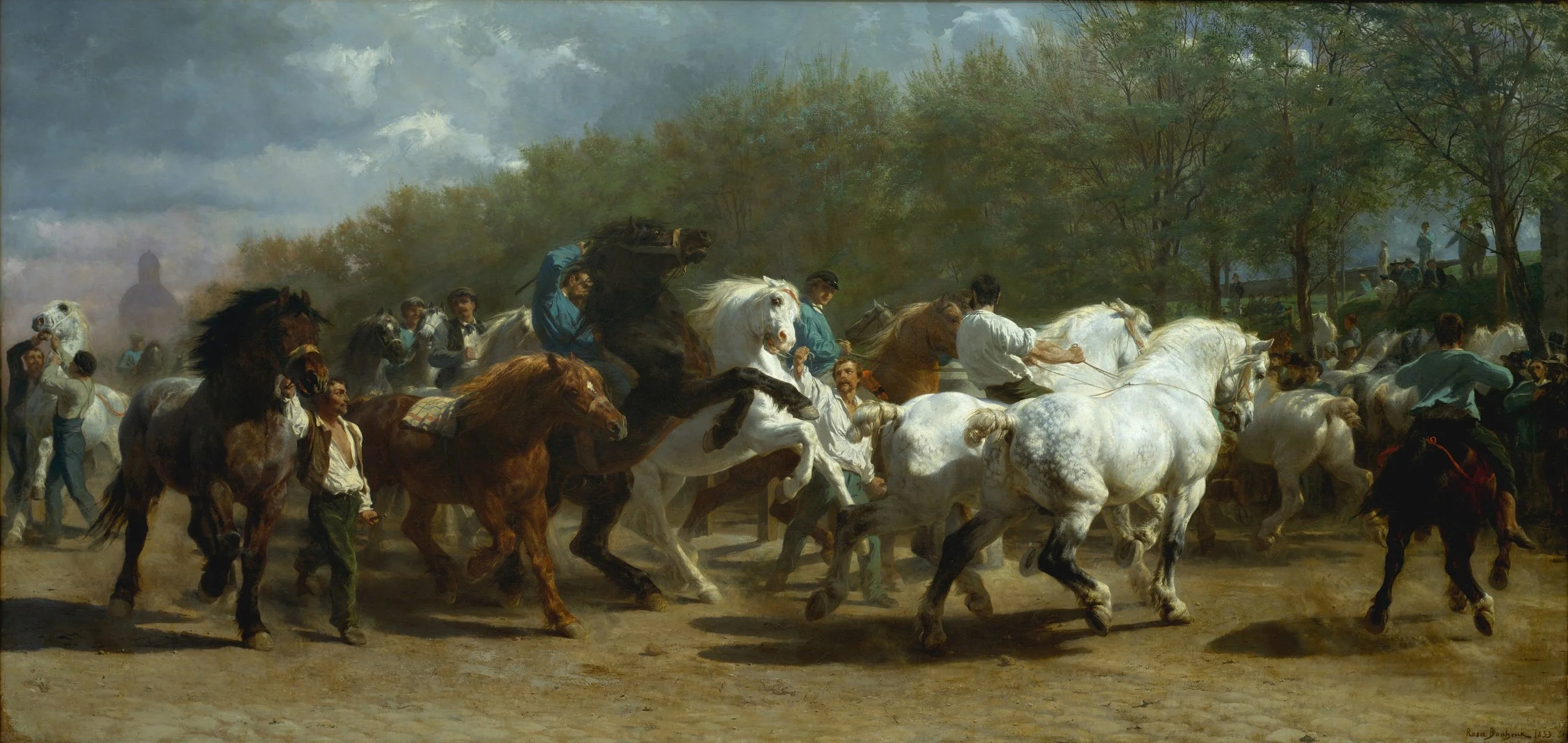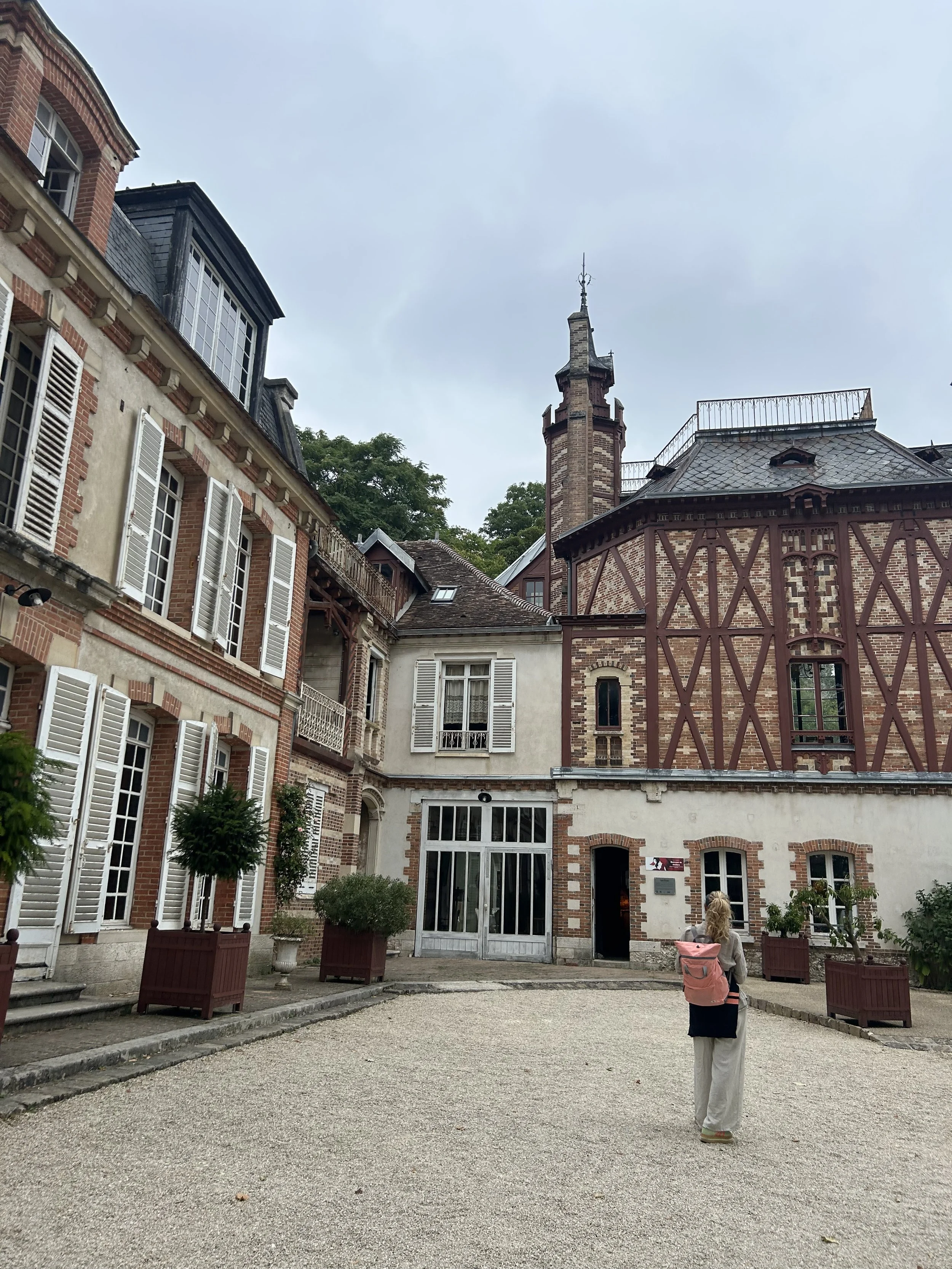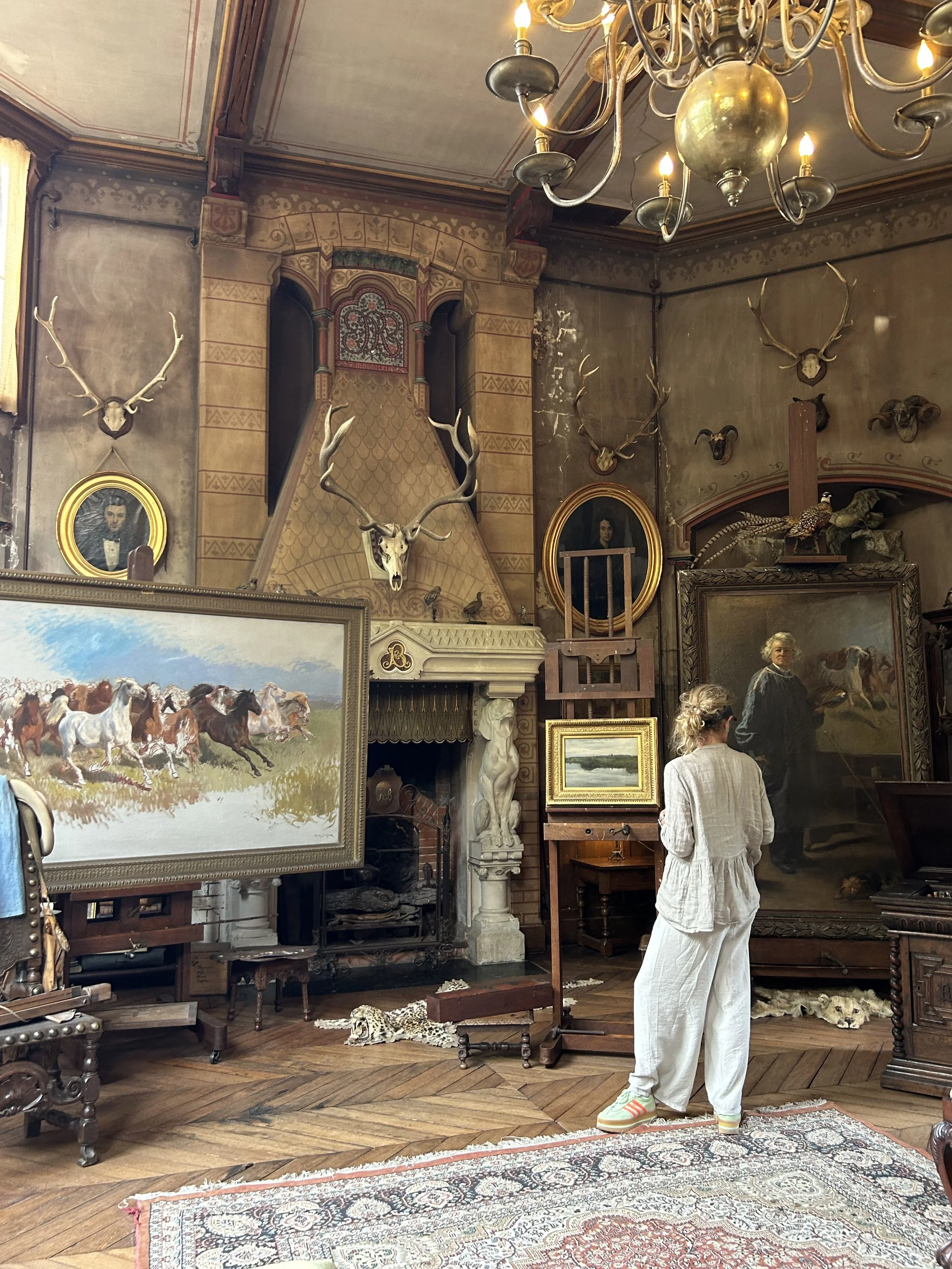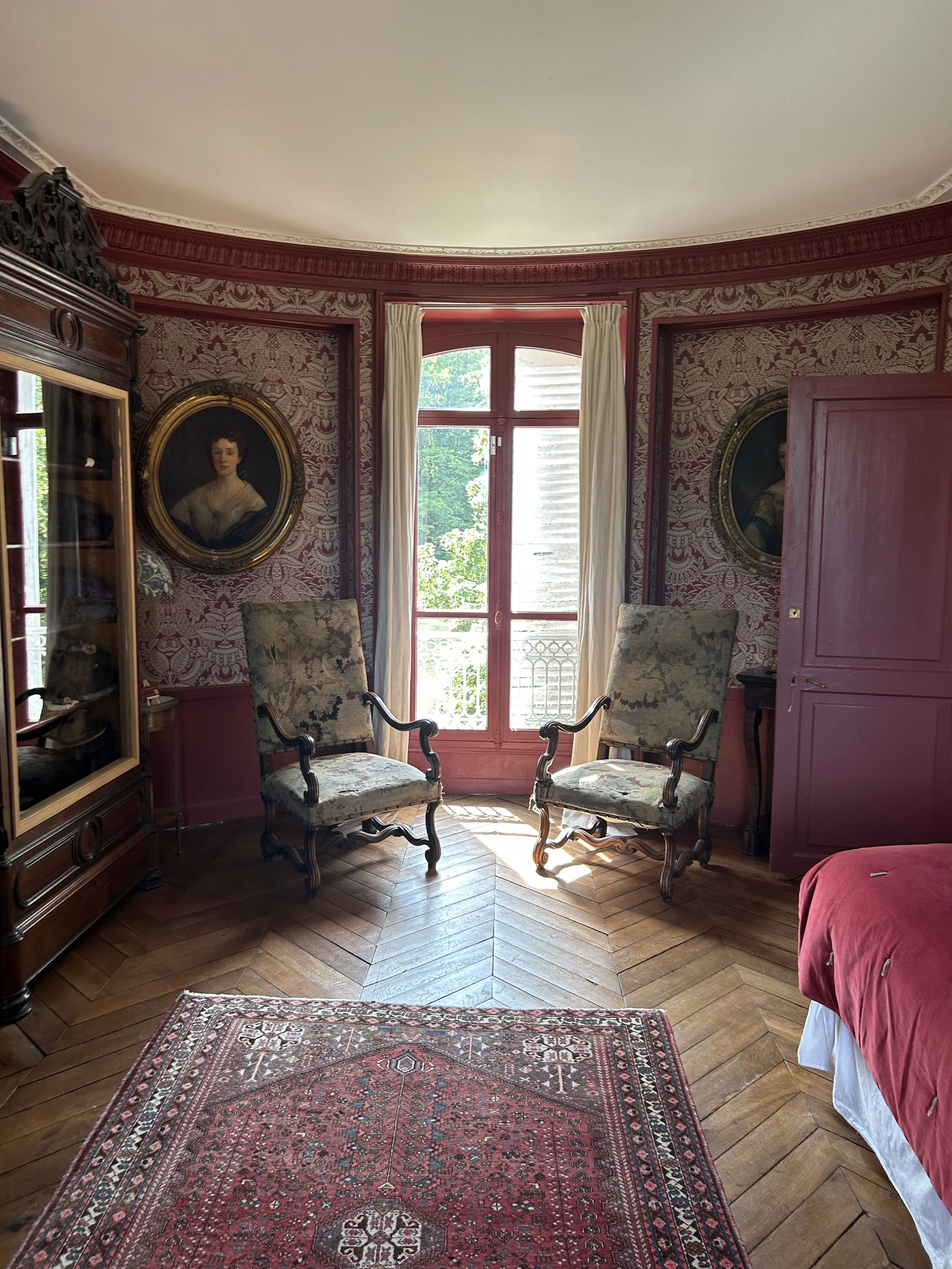Tails of Inspiration: Rosa Bonheur’s Legacy of Industry and Self Belief
Over 35 years ago I sat in front of a typewriter stumbling to respond to a college entrance essay “Who is your hero?” To this day I find the question odd, as hero worship is fairly suspect and I would prefer to respond to a question like, “If you were a breakfast cereal, which would you be?”
Still, the hero question stuck with me. I continue to ask myself who I look to for inspiration and guidance. As a girl growing up in the ‘70s and ‘80s, the landscape was pretty barren when it came to female heroes. My first book report was on Ray Bourque, a Canadian hockey player. Libraries at the time largely highlighted male cultural figures where my options were slim.
I came late to the art party, switching my college major from math to art after spending hours in the basement of my dorm, completely absorbed in drawing drapery. Since then, I’ve soaked in art history like a sponge, visiting every museum and gallery my legs, bus, subway, car, plane, or train ticket could carry me to.
The Horse Fair, 1855, Rosa Bonheur
My first encounter of Rosa Bonheur’s paintings was at the Metropolitan Museum of Art in New York City, where I would go religiously while working the first few months after college graduation. The giant painting of feisty, muscular and energetic horses titled “The Horse Fair” surprised me deeply when I saw it was painted by a woman whom I had never heard. I kept her name in my files and continued to research her over the years when I was curious about animal paintings and generally what female art heroes I could consider from the 19th century and beyond.
Homage Rosa Bonheur, 2017, watercolor, Catherine Haley Epstein
In 2017, I began a series of small watercolors that paid homage to women artists, including Rosa. Around the same time, I created a set of large paintings of my children, each placed symbolically on an animal, matched by shared traits and virtues. While I’ve never worked exclusively with animals in my art, I’ve always understood our interconnectedness: we are animals just like our four-legged (and no-legged) counterparts.
Back in 2011, I started working with the most animalic of the senses—smell—as both a supporting and central element of my practice. Unusual scent projects are continually on my radar and last year, while reading an issue of Nez magazine (no. 17), I came across an article about a perfumer who had created a scent to honor Rosa Bonheur. It was only in this article that I realized her home was open to the public and there were three rooms that you could rent. One of which was Rosa’s.
I sent an email to see about renting the room for one night, Rosa’s room please. They emailed it was available, and while my family had a rough itinerary for our summer trip to Spain and France I planted the reservation as a highlight.
After a quiet, sunny, sandy week of swimming in Anglet, my daughter and I made our way to Rosa Bonheur’s studio at Château de By, also known as Château de Rosa Bonheur, in Thomery, France. I wanted my daughter to see this history - the first woman to own her own property in France from her own money earned as an artist. If I had known about her years ago I would have written my book report and my hero’s essay on her. I tried to explain to my daughter that at the time, 1850, she was the richest woman and artist in France, and sleeping in her bedroom is akin to sleeping in Taylor Swift’s bedroom 200 years from now.
Exterior entryway of the Rosa Bonheur atelier and home
Arriving to the property we were greeted by several property cats, a couple of gray cats, one highly mamed, and a black cat for good measure. The staff member opened the narrow gate where we entered cautiously, our rental car beeping and whining as it tried to pull through the narrow entrance built for vehicles from 1820. It felt like we were going to an old eccentric relative’s house, where they were keeping up with the home as best they could, though the opulence had faded where the building was showing its age and trying hard to maintain a welcoming front full of character and love.
Interior of Rosa Bonheur’s studio
The only English speaking staff member gave us a generous tour of Rosa’s studio, the other bedrooms, and the grounds. There were no signs of “do not touch”, instead there was a generous atmosphere of sit where you like, explore all the crevices and take pictures of whatever you want. The unmuseumified atmosphere was an intimate and honest memorial to a woman who was neither pretentious nor fussy. The studio featured an unfinished painting, her painting smock on a chair and oils and palette as it was left. The energy was palpable and being alone in the room without the buzz of a larger group of visitors was magical.
Rosa Bonheur’s bedroom
That afternoon we settled into Rosa’s room, lightly updated in 2017 with modern plumbing, outlets, and a shower. Her clothing—both studio wear and everyday garments—were preserved behind glass in a rustic cabinet. Rosa was given an exemption for “medical reasons” to wear pants: it was illegal in France at the time to wear pants because it disrupted and threatened the male hierarchy of power over women.
Rosa lived with her lifelong friend Nathalie, who was also inventive and curious. At one point on the large property, she designed and tested a train brake that engineers reviewed and found impressive—though they ultimately refused to adopt it into existing train designs.
After a light dinner of salmon and watermelon gazpacho made on the property in a beautiful tea room, I took a solo walk around the property. A path through the woods led to Rosa’s outdoor studio and an old shooting range. For forty years, Rosa lived among over 200 animals—some of them even lived indoors, including monkeys and a lioness. As I walked alone deeper into the forest of short shrubs I became increasingly aware that I was not alone, that there were tiny beasts, probably cats, squirrels and birds, rustling. I tend to move confidently throughout these scenarios, having hiked solo in many rough areas alone, however something about this rustling did not feel normal or safe. The house was only 600 feet away, though I felt the urge to return to the room and reconnect with my daughter. The gray cat with no tail and open sores on its ears greeted me as I arrived to the patio of the house.
The night spent in her bedroom was restful, and my dreams were other worldly. While the content will not make sense to repeat, the feeling of urgency, destruction, healing and devastation were mixed with visuals I would compare to a fast-paced body horror film. I woke up relieved it was a dream. At breakfast I was describing to my daughter the dream, and considered the horror features were possibly due to the interaction I had the night before with the maimed gray cat in the garden patio. As I said that the cat jumped on my lap out of nowhere in the breakfast room: I’m fairly certain that cat may be the ghost of Rosa or perhaps her partner and have chills thinking about it as I write.
Before leaving, I bought a bottle of the perfume created in Rosa’s honor, “Fatma” named after one of Rosa’s favorite pets, by perfumer Véronique Nyberg. It’s clean, with polite musky and warm civet notes. While I appreciate the fragrance, if I were to make one myself, it would contain a lot more manure, cigarette smoke, varnish, and grains as Rosa smoked furiously and lay around with her animals often.
The stay at Rosa’s home stood in stark contrast to another artist pilgrimage I made in 2010, to Donald Judd’s compound in Marfa, Texas. Marfa, located just north of the Mexican border in a harsh and politically fraught landscape, is sometimes referred to as “God’s middle finger.” As a visitor, you don’t feel welcome. Judd’s former army barracks-turned-art-enclave feels like the basement of a boys’ club or prison desperate with cold aluminum walls, cement floors, and empty doorways. There are ideas on display, but no heart, no soul. The artist’s hands, ears, mouth and nose are stripped with only the cold eye as the feature. Dog’s barked to me as I entered Marfa and as I left. It was memorable for different reasons and a stark, highly institutionalized and museumified experience compared to the warm and intimate stay at the Rosa Bonheur house.
Rosa’s fierce independence, discipline, mastery and comittment to her craft and to animals is something I would have loved to write about for my college essay three decades ago as these are all esteemed features of a hero to me. That said, as my dream attested and after reading the biography just written, Art is a Tyrant by Catherine Hewitt, I learned that with fame and fortune there is always an underbelly. Two sides of the same coin are represented where heroes are both depressed and delighted with life.
I worry that Rosa’s legacy is fading as many do not know about her both in France and the United States. France’s Ministry of Culture—like the U.S.—does little to preserve these historic cultural treasures. Her home, her work, her story, her impact—all practically hidden. And yet, honoring her is vital. If we want to expand our collective imagination and potential, we must maintain these stories and celebrate the lives of radical, label-defying women like Rosa.
If you are reading this, please make a trip, stay at the property for a night or two and continue to support and expand women’s stories throughout time, especially the wild, brilliant ones who refused to play by the rules.
Château de Rosa Bonheur
12 Rue Rosa Bonheur, 77810 Thomery, France
(by appointment only)




